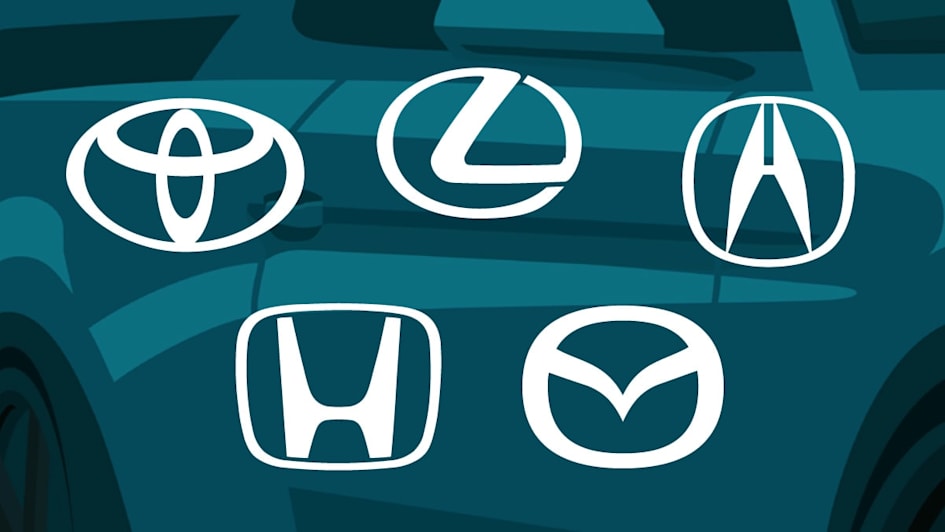Which Brands Make the Best Used Cars?
Consumer Reports’ ranks 26 car brands based on the reliability of their 5- to 10-year-old models

Consumer Reports’ brand ranking for used cars—focused on the reliability of 5- to 10-year-old models—makes it clear that buyers can reduce their risk of car trouble by concentrating on some brands over others. In the face of high new-car prices, tariffs, and inflation, buying a used model from a brand with a good reliability record can help owners save money on their next vehicle.
Of 26 brands, Lexus and Toyota top the list with a commanding advantage over third-ranked Mazda. All three brands have consistently earned average or better reliability ratings over the years. Honda and Acura round up the top five. Dodge, Jeep, and Chrysler are the least reliable for used cars, with 24th, 25th, and 26th positions in the ranking, respectively.
“Brands like Lexus and Toyota have a history of conservative redesigns, incrementally improving their entire product line rather than introducing many all-new systems,” says Steven Elek, CR’s senior automotive data analyst. “Our data consistently shows over time that cars from those brands are reliable when new, and they continue to be reliable as they age.”
Elek says that other brands have much less consistent reliability across their model lines. For example, over the seven years that the latest generation of the Chevrolet Equinox was sold, only the 2019 and 2024 editions have above-average reliability. Compare that with the entire 2014-2018 generation of the Chevrolet Silverado, which has below-average reliability for all four years. “This is why it’s best to check the reliability ratings for each model year when buying a used car,” he says. “Making assumptions can prove both costly and inconvenient.”
It’s also important to remember that when buying a used car, the reliability of individual models can vary from the brand’s average. Each option you might consider is unique, with its own history of use and service.
It’s no surprise that our used-car brand reliability findings often differ from our predicted reliability ratings for new cars. With new cars, we’re basing our analysis on the latest three years of reliability, along with brand history and other factors, such as whether a brand uses the same proven components in multiple cars.
The cars in our analysis of used models are often from an earlier generation, meaning they might not look like the current new models or share the same components. Plus, automaker portfolios can change significantly over time, especially this past decade, when many companies phased out sedans and hatchbacks for SUVs and trucks. (This trend is best exemplified by Ford, which currently offers a single car, the Mustang.)
Some brands, like BMW, have different placements in new vs. used reliability rankings. Rising reliability ratings mean that used BMWs may rank low. But for new-car predicted reliability, BMWs are high, in eighth place in our rankings. Trends can go in the other direction as well. Among used 5- to 10-year-old models, Volvo placed seventh for reliability. But in our new-car brand reliability rankings, it ranked 15th.
Overall, Teslas are becoming more reliable, as reflected in its similar ranks for new (17th) and used (15th) brand reliability. This is a significant change; Tesla was ranked 24th in our prior used-car reliability rankings, evidence of ongoing manufacturing and engineering improvements within the company. But its position shows there’s still room for improvement.
But some brands rank consistently for both new and used cars. Like their used-car ratings, Lexus and Toyota take the top two positions among new cars. Jeep claims a low position in both used- and new-car rankings. But there are brands that show significant variance between the lists, underscoring the importance of checking the latest data down to the model level to ensure you’re making an informed purchase decision.
To calculate reliability, we compare a car’s number of problems to the average number of problems for cars of that model year. For newer cars, the reliability differences tend to be narrow because the average problem rate for a newer model year like 2025 is so low. But over time, problems can develop, creating a much more significant variation among vehicles from the same model year.
“Taking this longer view, looking at reliability over five to 10 years, gives a clear picture of what used-car buyers can expect,” Elek says.
How We Score Used-Car Reliability
Every year, Consumer Reports asks its members about problems they’ve had with their vehicles in the previous 12 months. For this analysis, we focused on the problems reported on cars from the 2015 to 2020 model years from a survey sample of more than 150,000 vehicles.
We studied 20 potential trouble areas, from nuisances—such as squeaky brakes and broken interior trim—to major issues, such as potentially expensive ones related to out-of-warranty engines, transmissions, electric vehicle batteries, and EV charging. We weighed the problems according to their severity to calculate an overall reliability score
The overall reliability (verdict) ratings from those six model years were averaged to create the used-brand reliability score. These ratings are based on owner-reported problems. We had to have at least five years of data for each brand.
@consumerreports Our annual survey of over 300,000 vehicles reveals the five least reliable car brands of 2025. Learn more through the link in our bio. #cartok #cartiktok #carcommunity #carbrands
♬ original sound - Consumer Reports




















